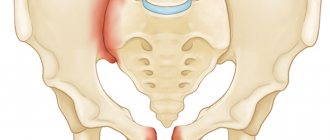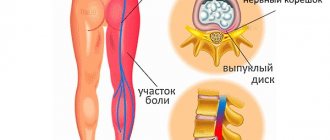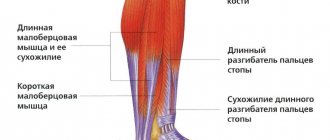The clavicle (commonly called the clavicle) is a long, thin bone that connects the rib cage to the shoulder girdle on each side of the upper body. A broken collarbone is a fairly common injury, especially in children, teenagers and young adults, because the bone does not fully mature until the age of 20. Common causes of collarbone fractures include accidental falls, sports injuries, and injuries from a car accident. A broken collarbone requires immediate medical attention to diagnose its severity, but does not always require surgery. In most cases, the bone will heal with appropriate home care and without surgery.
Delbe rings
Designs and devices for holding matched bone fragments differ in the degree of possible fixation. Traditional plaster is considered the toughest. For some patients, especially after 50 years, the use of plaster is not advisable, because such fixation is fraught with manifestations of arthrosis. When applying bandages, the patient feels severe pain, so local anesthesia is required.
Delbe rings for clavicle fractures are used in conservative treatment. To make it, cotton wool is used, wrapped in gauze and rolled into two rings. Their diameter is slightly larger than the circumference of the shoulder. The device is put on the hands, secured in the armpit, and loosely tied together on the back using a rubber tube. The resulting position of the limbs makes it possible to preserve the fixed bone fragments in the correct position.
Clavicle fracture, classification
By type - closed and open.
By location - fractures of the inner, middle and outer third of the clavicle. The thinnest and therefore most vulnerable is the middle third. That's why it breaks more often.
According to the type of fracture - without displacement and with incomplete or complete displacement of fragments. If incomplete, part of the bone fragments is held by intact periosteum. If complete, the periosteum is damaged.
The nature of the fracture lines is transverse, oblique and oblique-transverse.
If there are several fragments - splintered.
Corset
The corset used for injuries is lightweight and simple, and replaces inconvenient support devices well. It is able to reliably fix bone fragments and, thanks to its special properties, prevents them from moving relative to each other.
It is used throughout the treatment period and not only supports the injured collarbone, but also keeps the spine in the correct position and corrects posture. The fabric from which it is made does not cause allergies or irritation, and does not contribute to excessive sweating. The device is used for fractures and dislocations. It has good fixing properties, provided by additional ties. Size suitable for patients, from size 42 to 52.
If the collarbone is fractured, the corset is worn throughout the entire recovery period after the injury. A universal device is often used to correct posture in adults and children. To do this, it is worn 3 times a day for 1-2 hours. Only a traumatologist or orthopedist recommends the product for use.
To completely restore bone unity and form a complete callus, the patient must eat foods containing calcium and protein.
Features of the device:
- good fixation achieved with ties;
- versatility of size;
- posture correction;
- the possibility and necessity of use during treatment and rehabilitation after a collarbone injury;
- used to correct posture;
- when worn, an optimal position of the spine is achieved;
- convenient and easy to use.
Features of injury
A fracture of the clavicula occurs when there is a strong blow to it. This usually happens in car accidents or during sports. The first rib is located just below the collarbone, so a combined fracture is possible.
There are many muscles, large vessels and nerves around the collarbone. The apex of the lung is also located nearby. Bone fragments can damage these organs.
The main symptom of a clavicle fracture is sharp pain that occurs at the time of injury. Since the collarbone is located directly under the skin, fractures are most often open and accompanied by moderate bleeding. A specialist will tell you more about the features of a clavicle fracture in the video in this article.
Headband
It is possible to use a scarf bandage - a simple and affordable device.
But its use without additional means does not provide the necessary fixation. The purpose of the bandage is to slightly raise the arm and support it from sagging, due to which the muscles located in the vicinity of the collarbone are not tense and their impact does not lead to divergence of bone fragments. Any type of scarf material is suitable, preferably strong and not rough. The size of one side of the bandage must be at least one meter. If it is a square, it is folded diagonally to form a triangle. The upper limb from the side of the injured collarbone is placed on its long side, and the ends are secured to the back of the neck. The arm at this moment should be bent at the elbow at a right angle. The bandage fabric is distributed along the entire length of the forearm.
First aid at home
Sudden injury can happen to anyone, so it is important to know how to provide first aid to a person. It is important not to disturb the already painful displacement and follow all the rules.
Some practical tips on what to do with a broken collarbone:
- Before the person waits for the doctor, you should secure the arm using a towel as a loop under the forearm and around the neck;
- the person should move the injured arm as little as possible;
- Provide the victim with over-the-counter pain relievers such as Ibuprofen or Paracetamol to minimize pain;
- Aspirin should not be given to children under 16 years of age;
- An ice pack on the damaged area or a bag of frozen vegetables should be used as an alternative. The ice pack should be covered with a clean towel or cloth to prevent damage to the skin. The cooling effect may help reduce swelling and pain.
Conclusion
All dressings available and used in traumatology provide beneficial assistance in the subsequent treatment and rehabilitation of the patient. Among the variety, it is important to choose the right product for you. A doctor who has the experience and qualifications to determine the severity of your injury and take into account the details of its treatment will help with this. Independent prescriptions and treatment can cause irreparable consequences and complications that can lead to disability of the patient or negatively affect the quality of his future life.
Transport immobilization
In order to provide first aid before taking the victim to the trauma department of the clinic, it is recommended to apply a transport bandage. For these purposes, you will need a scarf at least 35-40 cm long.
There are several methods of transport immobilization for clavicular bone injuries. These include the following:
- An ointment with analgesic properties is applied to the skin in the area of injury. This manipulation will allow you to securely fix the injured collarbone and create a dense layer in the fracture zone. The bandage itself is applied to the injured area with precise and careful movements.
- Binding. This method of immobilization allows you to firmly fix the area on both sides. The fracture area is fixed with a binding made of two pieces of fabric.
It is very important to carry out all manipulations accurately and carefully, since an incorrectly applied bandage or lack of necessary fixation can cause damage to displaced bone fragments, nerve endings and blood vessels, which can lead to severe bleeding, loss of sensitivity, cuts and other consequences dangerous to the patient’s health. .
Therefore, if you do not have the necessary skills and experience, before delivering the patient to a medical facility, you can perform immobilization using a scarf. A scarf is the easiest way to perform a bandage, allowing you to temporarily elevate an injured limb without displacing bone fragments.
If you don’t have a scarf at hand, any piece of fabric (long and wide enough) folded into a triangle will do. The long ends of the scarf are fixed around the victim’s neck, and the larger side is placed under his wrist. Thus, the bandage fixes the entire area of the damaged forearm.
There are many ways to immobilize a broken clavicular bone. The optimal option is determined by the treating specialist individually, after preliminary diagnosis.
The structures necessary for fixing and maintaining bone fragments in the correct position differ, first of all, in the degree of their rigidity. A plaster cast is considered the most rigid. But for many patients, especially those over 60 years of age, plaster casting is not recommended, due to the increased risk of developing complications such as arthrosis and severe pain. In such cases, softer fixing structures are used.
About Delbe rings
Delbe rings for clavicle fractures are often used when treating with conservative methods. The fixing structure is made of cotton wool wrapped in sterile gauze fabric folded in several layers. At the next stage, the blanks are rolled into the shape of two rings.
The diameter of the Delbe rings should be quite a bit larger than the patient's shoulder circumference. How is such a device applied? According to the established instructions, the upper limbs of the victim are threaded into the rings, secured in the armpits, and then tied together in the back with a bandage threaded through the holes.
When tying the rings, you should try to leave a slight tension; the bandage should not be too tight or pressing. As a result, a kind of fixing circle is formed around the patient’s shoulders, creating additional support for the shoulder girdle. In this case, the bone fragments are carefully moved in different directions, which makes it possible to somewhat ease the pain syndrome and alleviate the condition of the injured person.
Using Delbe rings in case of a clavicular bone fracture, you can give the limbs the correct position, allowing for optimal and reliable fixation of bone fragments. The disadvantages of this technique include discomfort in the patient’s armpits, which occurs due to friction of the fabric or bandage against the skin.
In addition, the rings do not contribute to raising the shoulder girdle, which is important to prevent the deviation of fragments of the clavicular bone from its axis as a result of the influence of adjacent muscle groups. For this reason, it is often recommended to use a scarf bandage for additional fixation. The wearing period of Delbe rings is, on average, about 1.5 months.
Sayre's immobilization technique
The Sayre bandage, which is applied using a patch, is one of the most effective methods of transport immobilization for violations of the integrity of the clavicular bone. To help the victim you will need 3 strips of regular plaster. The optimal length of each strip is about a meter, width - from 5 to 9 cm.
Before application, the patient’s forearm is carefully bent at a right angle in the area of the elbow joint. The application technique is as follows:
- The first strip is applied transversely, passing through the outer, posterior and anterior surfaces of the injured shoulder, so that the patch passes through the back to the chest.
- The second strip is placed on the uninjured side in the area of the shoulder blade, raised to the forearm, thrown over the healthy clavicle bone, lowered down slightly and, passing through the chest, applied to the damaged forearm (in the area of the elbow joint).
- The third strip of the patch is folded into a loop and applied so that it covers the area of the injured forearm and wrist joint. After this, the strip is raised to the area of the shoulder blade.



